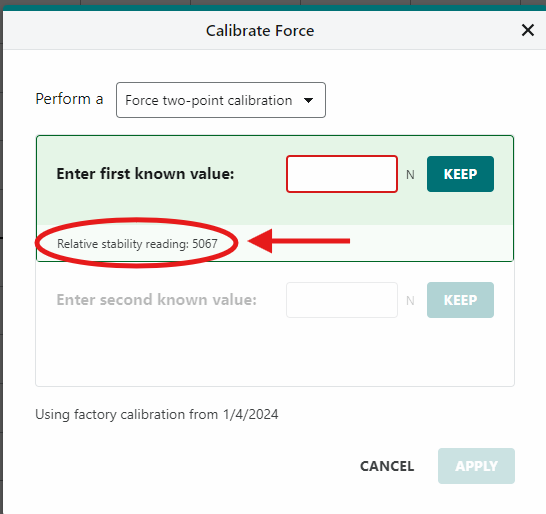The Relative Stability Reading is a unitless, numeric value related to the sensor data output. This value is displayed in the calibration dialog for most Go Direct Sensors.
When calibrating a sensor, it is important that the sensor data output is stable before associating that output to a specific sensor reading. You need to wait until the Relative Stability Reading levels off before continuing with the calibration. Generally this should not take more than a couple of seconds.

When doing a two- or three-point calibration, you should notice different stability readings for the different calibration points.
Some important points regrading the Relative Stability Reading
- Different sensors will report different values under the same conditions. This is expected; however, the numbers should be fairly similar if the sensors are all about the same age.
- pH Sensors, Ion-Selective Electrodes, and Oxygen Gas Sensors all contain electrodes that degrade over time. This means that their stability readings will change over time as well (given all other factors remaining the same).
- Some sensors will never completely stop changing. While it is different for each sensor, generally as long as the changes are in the hundreds place or less, you should be okay to continue with calibration.
- Stability readings should change when the conditions affecting the sensor change. For example, if you pull on a force sensor hook or put a pH sensor into a different pH buffer solution, you should see a change in the stability reading. If the value does not change, the sensor may need repair.
- The stability reading is scaled differently for each Go Direct sensor. There is not a specific mapping that can be used to correlate the sensor reading with the relative stability output.
